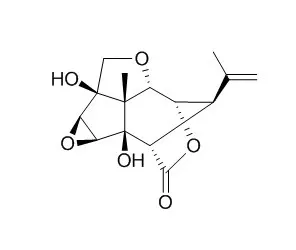| In vitro: |
| Am J Chin Med. 2014;42(1):23-35. | | Phytochemistry and biology of Loranthus parasiticus Merr, a commonly used herbal medicine.[Pubmed: 24467533] | Loranthus parasiticus Merr (L. parasiticus) is a member of Loranthaceae family and is an important medicinal plant with a long history of Chinese traditional use. L. parasiticus, also known as Sang Ji Sheng (in Chinese), benalu teh (in Malay) and baso-kisei (in Japanese), is a semiparasitic plant, which is mostly distributed in the southern and southwestern regions of China.
METHODS AND RESULTS:
This review aims to provide a comprehensive overview of the ethnomedicinal use, phytochemistry and pharmacological activity of L. parasiticus and to highlight the needs for further investigation and greater global development of the plant's medicinal properties. To date, pharmacological studies have demonstrated significant biological activities, which support the traditional use of the plant as a neuroprotective, tranquilizing, anticancer, immunomodulatory, antiviral, diuretic and hypotensive agent. In addition, studies have identified antioxidative, antimutagenic, antiviral, antihepatotoxic and antinephrotoxic activity. The key bioactive constituents in L. parasiticus include coriaria lactone comprised of sesquiterpene lactones: coriamyrtin, tutin, Corianin, and coriatin. In addition, two proanthocyanidins, namely, AC trimer and (+)-catechin, have been recently discovered as novel to L. parasiticus.
CONCLUSIONS:
L. parasiticus usefulness as a medicinal plant with current widespread traditional use warrants further research, clinical trials and product development to fully exploit its medicinal value. |
|






 Cell. 2018 Jan 11;172(1-2):249-261.e12. doi: 10.1016/j.cell.2017.12.019.IF=36.216(2019)
Cell. 2018 Jan 11;172(1-2):249-261.e12. doi: 10.1016/j.cell.2017.12.019.IF=36.216(2019) Cell Metab. 2020 Mar 3;31(3):534-548.e5. doi: 10.1016/j.cmet.2020.01.002.IF=22.415(2019)
Cell Metab. 2020 Mar 3;31(3):534-548.e5. doi: 10.1016/j.cmet.2020.01.002.IF=22.415(2019) Mol Cell. 2017 Nov 16;68(4):673-685.e6. doi: 10.1016/j.molcel.2017.10.022.IF=14.548(2019)
Mol Cell. 2017 Nov 16;68(4):673-685.e6. doi: 10.1016/j.molcel.2017.10.022.IF=14.548(2019)